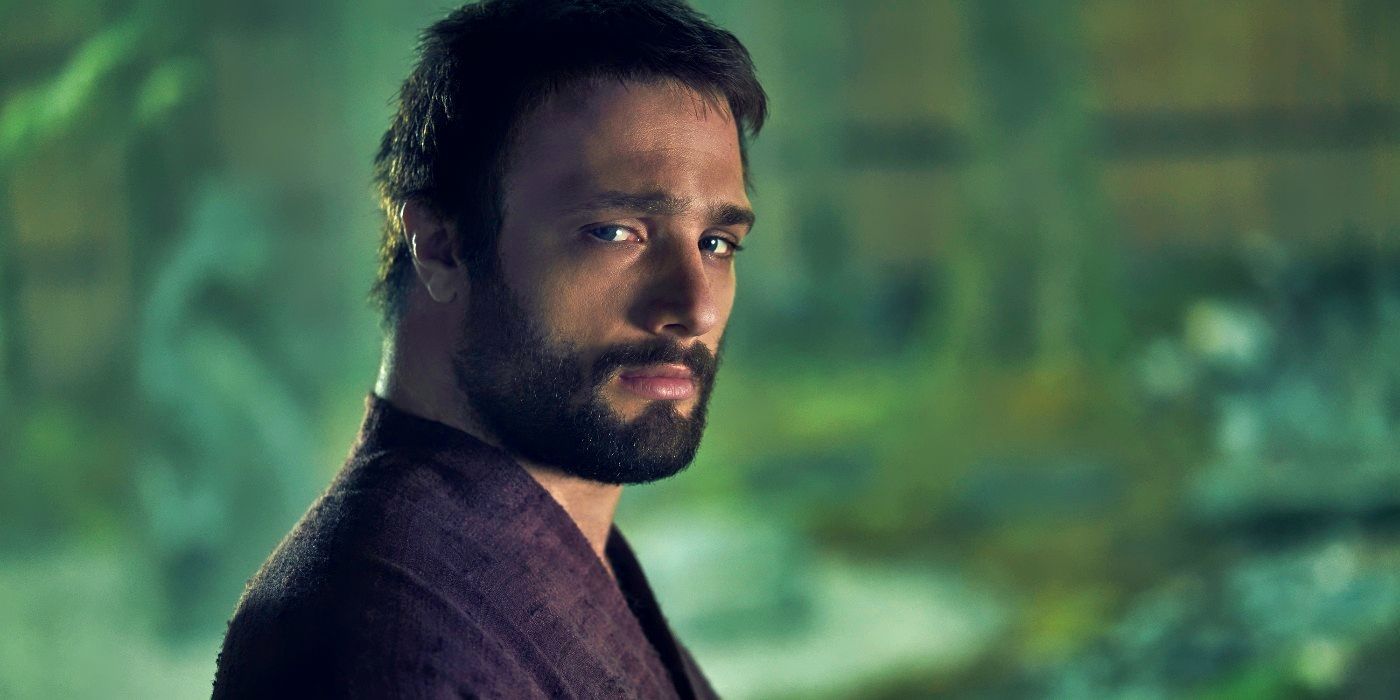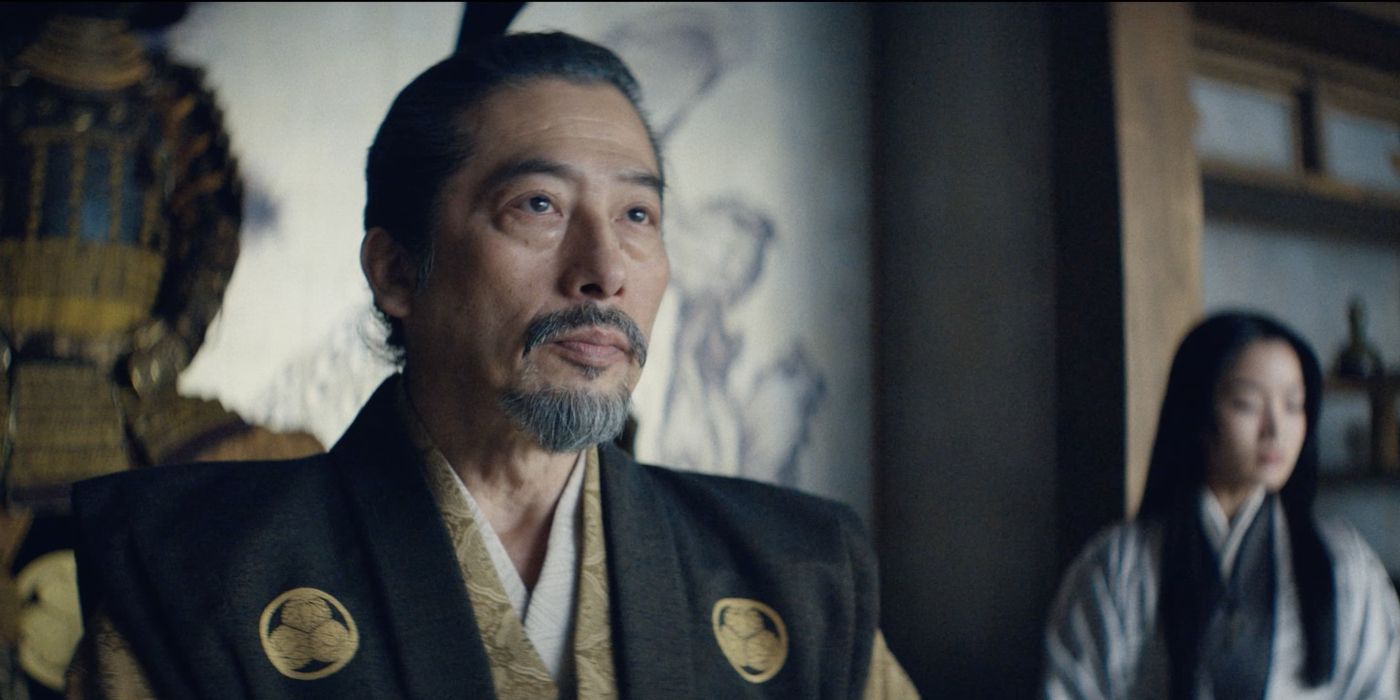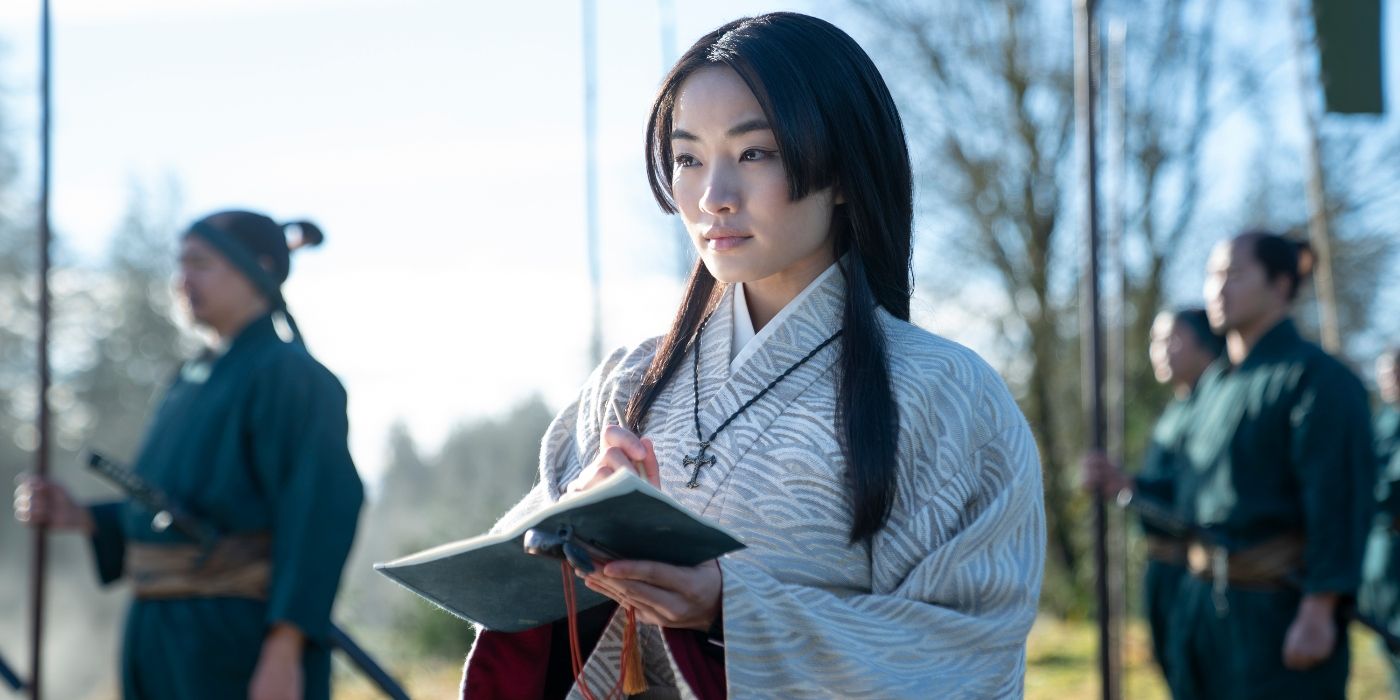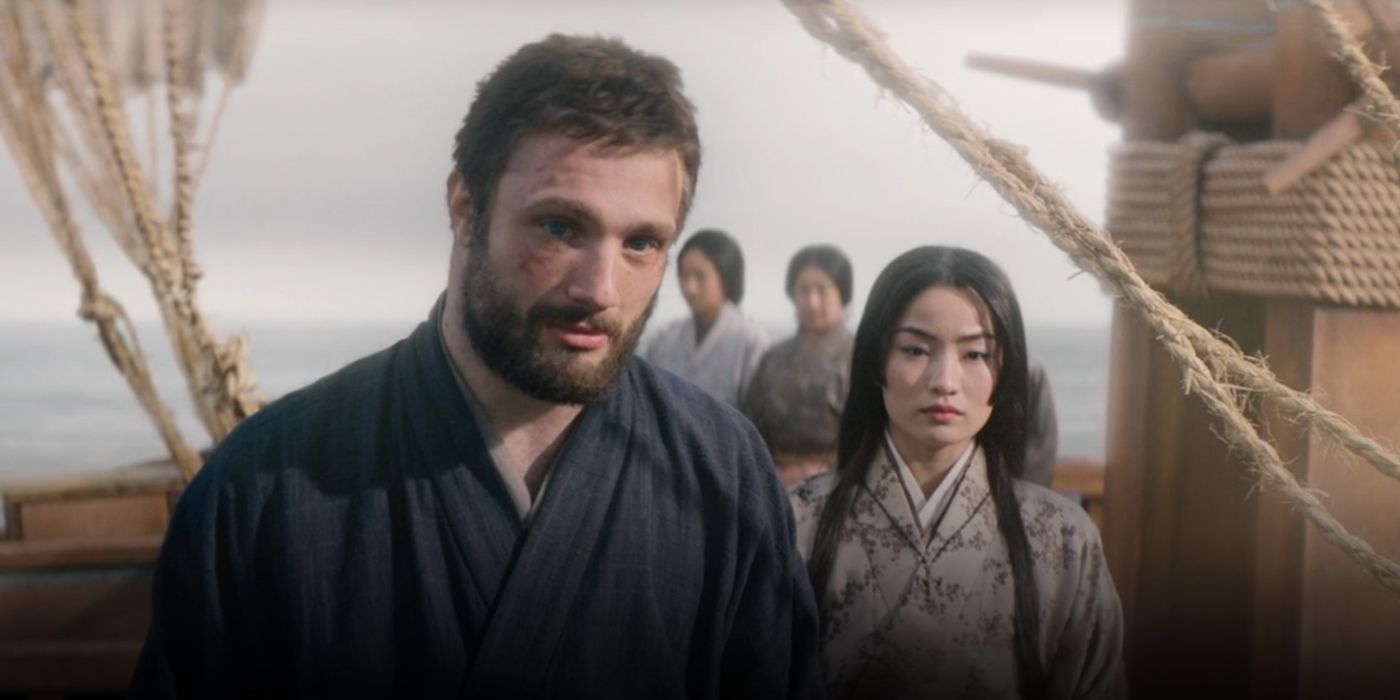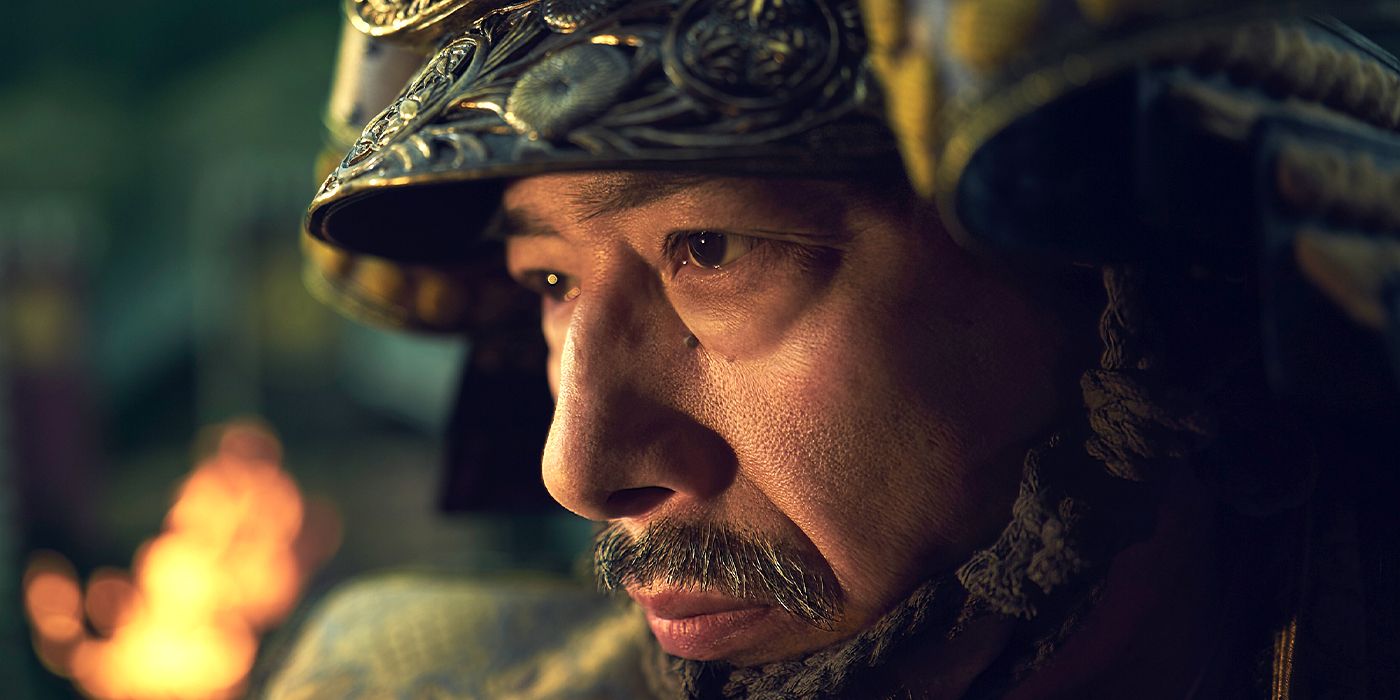Time to brush up on your knowledge, history buffs.
With FX’s new miniseries, Shōgun, the acclaimed novel by James Clavell makes its triumphant return to screens. The book is a work of historical fiction depicting the adventures of John Blackthorne (Cosmo Jarvis), an English sailor who finds his way to “the Japans” in the hopes of breaking the Portuguese trade monopoly in the Far East and opening up a whole new market for European nations. The FX series, however, elevates two other characters to the status of protagonists: Lord Yoshii Toranaga (Hiroyuki Sanada) and Toda Mariko (Anna Sawai). This trio is based on real historical figures, although there are some key differences between them and their historical counterparts. The similarities are striking, though, making Shōgun a must-see for history buffs.
‘Shōgun’s Lord Toranaga Is Based on One of Japan’s Great Unifiers
One of the most powerful characters in Shōgun, Lord Toranaga is also the most interesting. He is a masterful tactician both in the military and political arenas, and always keeps his plans well hidden inside his own mind. He is part of the Council of Regents, which was created by the Taikō Nakamura Hidetoshi (Yukijiro Hotaru) on his deathbed as a way of keeping the warring lords from taking the throne from his heir. However, the other four regents, led by Lord Ishido Kazunari (Takehiro Hira), quickly start plotting against him for fear of his military power and political abilities.
Up until this point in the story, Lord Toranaga’s story is closely based on that of Tokugawa Ieyasu, considered one of Japan’s three Great Unifiers. Both belong to lineages that are said to date back to powerful ancient shōguns, and both grew up as hostages after their families suffered defeats in war. Like Lord Toranaga, Tokugawa knew how to plot his political path and defeat his enemies, and was a key ally of another of the Great Unifiers, Oda Nobunaga, to the point of forcing his own son to commit seppuku once it was found that he was conspiring with a rival — hopefully, that won’t happen to Yoshii Nagakado (Yuki Kura) in the series.
When Oda was betrayed and committed seppuku, however, another of his allies, Toyotomi Hideyoshi, avenged him and seized power, forcing Tokugawa to adapt to the new scenario. In Shōgun, Hideyoshi’s equivalent is Taikō Nakamura. Still, Tokugawa’s alliance with Hideyoshi was marked by loyalty, with him being made daimyō of the Kanto region and building the castle town of Edo (current-day Tokyo), where Toranaga also has his base in the series. When Hideyoshi died, Tokugawa found himself in the exact same position as Toranaga, being the most powerful member of the Council of Regents and war brewing on the horizon.
Going beyond the point where Shōgun begins, the Council of Regents collapses barely a year after Hideyoshi’s death, with one of the regents perishing, too. Tokugawa then moved to seize Osaka, and Japan soon found itself divided between the Tokugawa forces and those of Ishida Mitsunari, the second most powerful regent upon whom Lord Ishido is based in the series. Eventually, though, Mitsunari was defeated and Tokugawa became shōgun, marking the start of the Edo Period in Japanese history, which lasted for 265 years. Under Tokugawa, relations with Catholic countries took a turn for the worse, as he was concerned with the territorial intentions of Portugal and Spain over Japan, resulting in Christianity being banned. One of his most influential advisers was a Protestant English merchant named William Adams.
‘Shōgun’s John Blackthorne Is Based on an English Merchant Who Became a Samurai
Like Lord Toranaga and Tokugawa Ieyasu, John Blackthorne’s story in Shōgun is almost identical to that of his historical counterpart, William Adams. He was a Protestant sailor who took a dislike to Catholics when Spain attempted to overthrow Queen Elizabeth and put a Catholic monarch on the English throne, and decided to join the English fleet at the time. He learned the trade of shipbuilding and became a pilot, and after the conflict with Spain, became a pilot for a Dutch trade company that was the precursor to the Dutch East India Company. At that time, England and the Netherlands were partners as Protestant nations and rivals of Catholic Portugal and Spain, and two English privateers, Francis Drake and Thomas Cavendish, had already circumnavigated the globe.
Adams arrived in Japan after a disastrous journey, in which only one of five ships survived, as well as 26 out of almost 500 men. Japan was on the brink of civil war at the time, and, when he arrived, Adams and his crew were kept as prisoners in the Osaka castle under daimyō Tokugawa Ieyasu’s orders. Portuguese Jesuit priests, who were numerous in Japan, tried to convince Tokugawa to have Adams killed as a pirate, but the Japanese daimyō declined on the grounds that any conflicts between their nations didn’t concern him. Instead, Adams became an advisor to Tokugawa even after he became shōgun, and Adams led the construction of the first Western-style armada in Japan. The Englishman quickly learned Japanese and, with that, gained direct access to Tokugawa at any time. Tokugawa also gifted him with two swords, giving Adams the authority of a Samurai.
During this period, Adams had a wife, a son, and a daughter in England, but Tokugawa forbade him from returning, so their contact was restricted to mail correspondence. To deal with this issue, Tokugawa issued a decree “killing” William Adams and “creating” Miura Anjin (which translates to “the pilot of Miura,” a region in Japan), making his English wife officially a widow, and granting Adams the title of hatamoto. Adams’ influence facilitated the establishment of Dutch and English trade factories in Japan, effectively breaking Portuguese monopoly. He married again in Japan and formed a new family — though he never met the historical equivalent to the series’ Toda Mariko, Hosokawa Gracia.
‘Shōgun’s Lady Mariko Shares a Troubled Family Past With Her Real-Life Counterpart
In Shōgun‘s most recent episode, “The Eightfold Fence,” Toda Mariko’s backstory finally begins to be revealed. Before she married Toda Buntaro (Shinnosuke Abe), her family fell into disgrace in a yet unknown way, leaving her alone. To cope with this and her turbulent marriage, Mariko turned to Catholicism, quickly learning its dogmas and becoming fluent in Portuguese and Latin. This prompted Lord Toranaga to bring her into his inner circle and put her in contact with John Blackthorne. Mariko’s real-life counterpart is Hosokawa Gracia, someone who faced just as many challenges in life, but who became a key figure in Tokugawa Ieyasu’s rise as shōgun later on.
Hosokawa Gracia was born Akechi Tama and grew up as a highborn, even training as a Samurai, and marrying Hosokawa Tadaoki, Buntaro’s historical counterpart — instead of one child, they had at least four. The Akechi clan was loyal to Oda Nobunaga at a time when he was at the height of his power with Tokugawa Ieyasu as an ally, but their leader, Akechi Mitsuhide, betrayed Nobunaga, which resulted in the warlord committing seppuku. Mitsuhide was killed soon after, and his clan fell into disgrace. Under Toyotomi Hideyoshi’s rule, the Hosokawas moved to Osaka, where Tama was to remain confined. She got in touch with Christianity through her handmaids, started studying Portuguese and Latin, and was baptized with a new name, Gracia. During his time, her marriage became turbulent because of religious differences.
When Tokugawa went east with his army, Osaka was conquered by Ishida Mitsunari, who was one of Toyotomi’s allies and would later antagonize Tokugawa. Ishida took Hosokawa Gracia as a political hostage, but one of the family’s servants killed her to protect her honor and committed seppuku afterward. Gracia’s death was seen as an outrage by both sides of the war and began Ishida’s downfall, as he had the support of many Christians. Eventually, this led to his defeat in the Battle of Sekigahara against Tokugawa.
Shōgun is streaming on Hulu in the US. New episodes are released weekly on Tuesdays.
